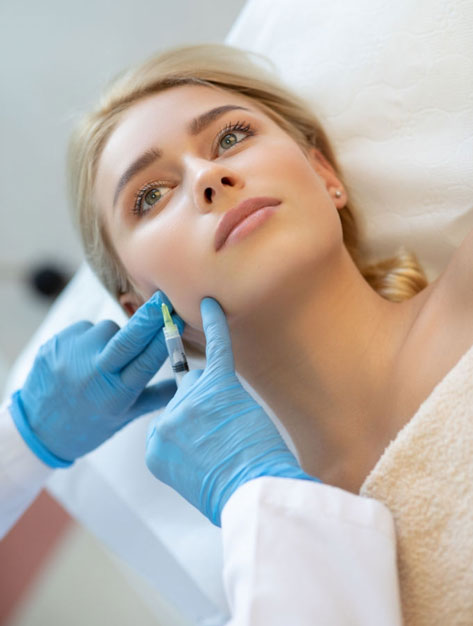The Ultimate Guide to Back Acne Treatment
Acne is a common skin condition that can affect more than just your face. For many skincare enthusiasts, back acne, or “bacne,” can be a frustrating issue. Whether you’re wearing a tank top or heading to the beach, bacne can be a concern for adults looking to achieve clear, healthy skin. This guide will explore everything you need to know about back acne, from its causes to effective treatments and prevention strategies.
What is Back Acne?
Back acne, commonly referred to as “bacne,” is similar to facial acne but appears on your back. Just like facial acne, it can manifest in various forms, including pimples, blackheads, and cysts. The back is particularly susceptible to acne because it has a high concentration of sebaceous glands that produce oil, leading to clogged pores.
Bacne can affect people of all ages, but it’s particularly prevalent among teenagers and adults with oily skin. While it’s often less visible than facial acne, it can be just as bothersome. Understanding what back acne is can help you take the necessary steps to treat and prevent it.
Treating back acne effectively requires a combination of understanding its causes, recognizing symptoms, and adopting a consistent skincare routine. In the following sections, we’ll explore these aspects in detail.
Who Might Get Back Acne?
Anyone can develop back acne, but certain factors make some people more prone to it than others. Teenagers often experience bacne due to hormonal changes that increase oil production. Similarly, adults dealing with hormonal imbalances may also be susceptible.
People with oily skin types are particularly vulnerable to back acne. The excess oil can clog pores, leading to breakouts. Additionally, those who sweat excessively, especially after physical activities, may notice an increase in back acne due to sweat mixing with oil and bacteria.
Genetics also play a role in determining who might get back acne. If your family has a history of acne-prone skin, you may be more likely to experience it. Understanding these risk factors can help identify why you’re experiencing back acne and guide you toward suitable treatments.
Why Does Acne Occur on the Back?
Acne occurs on the back for several reasons, primarily related to oil production and friction. The back has a high density of sebaceous glands, which produce oil to keep the skin moisturized. However, when there’s an overproduction of oil, it can clog pores and lead to acne.
Friction from tight clothing or backpacks can exacerbate back acne. It creates irritation on the skin, making it more susceptible to breakouts. Additionally, sweat and bacteria trapped under clothing can also contribute to the development of acne.
Hormonal fluctuations are another common cause of back acne. Hormones can increase oil production, leading to clogged pores. Recognizing the reasons why acne occurs on your back can help you develop effective strategies to manage and treat it.
Back Acne Treatment
Treating back acne requires a multi-faceted approach that targets the underlying causes. Over-the-counter acne treatments with ingredients like salicylic acid and benzoyl peroxide can help reduce inflammation and clear clogged pores. Regularly using these products can significantly improve the appearance of back acne.
For more severe cases of back acne, prescription medications may be necessary. Dermatologists can prescribe topical or oral antibiotics to reduce bacteria and inflammation. In some cases, hormonal treatments such as birth control pills may be recommended to regulate hormone levels.
Incorporating regular exfoliation into your skincare routine can also aid in treating back acne. Exfoliating helps remove dead skin cells and prevents them from clogging pores. Remember to choose a gentle exfoliant to avoid irritating the skin further.
What Are the Symptoms of Back Acne?
The symptoms of back acne can vary depending on the severity of the condition. Mild cases often present as small, non-inflammatory comedones, commonly known as blackheads or whiteheads. These occur when pores become clogged with oil and dead skin cells.
Moderate to severe cases of back acne involve inflammatory lesions such as papules, pustules, and cysts. These can be painful and may leave scars if not treated properly. Redness and swelling are common symptoms in these cases.
Being aware of the symptoms of back acne can help you identify it early and seek appropriate treatment. Addressing back acne in its initial stages can prevent it from worsening and causing further discomfort.
How is Back Acne Diagnosed?
Diagnosing back acne typically involves a physical examination of the affected area by a dermatologist. The dermatologist will assess the type and severity of the acne to determine the most suitable treatment plan. In some cases, additional tests may be conducted to rule out underlying medical conditions.
A detailed medical history may be taken to identify potential factors contributing to back acne, such as hormonal imbalances or medication usage. This information helps the dermatologist tailor a treatment plan that addresses the root cause of the acne.
Understanding how back acne is diagnosed can give you confidence in seeking professional help when needed. Early diagnosis ensures timely intervention and better management of the condition.
How Can I Prevent Back Acne?
Preventing back acne involves adopting a consistent skincare routine and making lifestyle adjustments. Regularly cleansing your skin with a gentle, non-comedogenic cleanser can help remove excess oil and dirt. Look for products labeled as “oil-free” and “non-comedogenic” to prevent clogging pores.
Wearing loose-fitting clothing made of breathable fabrics can minimize friction and allow your skin to breathe. Additionally, showering immediately after exercising helps remove sweat and bacteria that could contribute to acne.
Diet also plays a role in preventing back acne. A balanced diet rich in fruits, vegetables, and whole grains can support skin health. Staying hydrated and consuming foods with anti-inflammatory properties may reduce the risk of breakouts.
When Should I Consult With a Skin Doctor?
Consulting with a skin doctor is advisable if your back acne is severe, persistent, or causing significant discomfort. A dermatologist can provide personalized treatment options and prescribe medications if necessary. It’s also essential to seek professional help if over-the-counter treatments aren’t yielding results.
Aari Skin and Hair Clinic is renowned for its expertise in treating acne. Their team of experienced dermatologists can offer tailored solutions to address your specific needs. Consulting with a qualified professional ensures you receive the most effective treatment for your back acne.
Taking the step to consult with a skin doctor can significantly improve your skin health and overall well-being. Don’t hesitate to reach out for expert guidance when needed.
Conclusion
In conclusion, back acne is a common skin concern that affects many adults and skincare enthusiasts. Understanding its causes and symptoms is crucial for effective treatment and prevention. By adopting a consistent skincare routine and seeking professional help when necessary, you can manage and reduce back acne.
Remember, achieving clear skin is a journey that requires patience and dedication. Incorporate the tips and strategies discussed in this guide into your daily routine to see positive results. If you’re seeking expert advice, consider reaching out to Aari Skin and Hair Clinic for personalized treatment options.
Take charge of your skin’s health today and enjoy the confidence that comes with clear, radiant skin. Explore more resources and connect with professionals who can guide you on your path to healthier skin.






